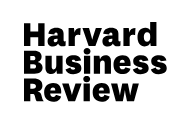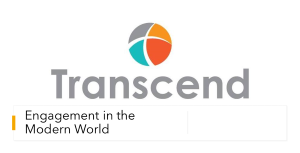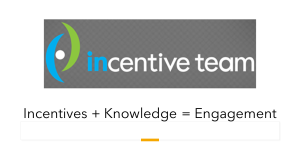HBR Insight: The Purpose of Purpose Statements
 This recent article in the Harvard Business Review outlines the difference between a bright shiny purpose statement on your organization’s walls or web sites and the guiding principles for your organization’s operating system.
This recent article in the Harvard Business Review outlines the difference between a bright shiny purpose statement on your organization’s walls or web sites and the guiding principles for your organization’s operating system. 1. Tell the Truth About Your Purpose
2. Build a Team Fully Committed to The Purpose
3. Put Your Money Where Your Purpose Is
4. Turn Purpose Statements Into Standard Operating Behaviors
Click here for links to information about EEA engagement solution providers.
Most purpose statements are fluff, assert the authors of this recent article in the Harvard Business Review, What Successful Purpose Statements Do Differently.
According to the authors, their firm Bain & Company used AI to analyze nearly 150,000 Glassdoor reviews for 81 of the largest US retail and consumer products companies to see if employees mention their organizations’ purpose as a factor in their reviews. Their analysis . that reviews touching upon a company’s purpose were critical of it as often as they praised it.
We were looking for evidence that employees find their company’s purpose both clear and meaningful to their work. But we found little. Less than 3% of Glassdoor respondents even mentioned the company’s purpose as a factor in their reviews. Reviews that did touch on company purpose panned it nearly as often as they praised it.
The authors are Darrell Rigby, a partner in the Boston office of Bain & Company; Dane Smith, a partner focused on purpose, and Zach First, a partner who leads the firm’s stakeholder strategy. work. They conclude “Sadly, purpose statements at all too many organizations are just empty words. The companies that issue them don’t live up to their lofty promises.”
The return on investment of an effective purpose strategy? “A company’s purpose is its promise to do something for someone. Clear and compelling promises that are kept can align stakeholders on common goals, inspire extraordinary commitment, focus resource allocations on proper priorities, increase accountability, and build a business system that creates mutual benefits for all team members.”
To make purpose statements effective, they identify four success factors.
1. Tell the Truth About Your Purpose
The authors cite the example of Marriott International, whose “purpose statement highlights five core values: putting people first, pursuing excellence for customers, embracing change, acting with integrity, and serving our world. Many companies say similar things, but in our study, Marriott scored in the top 10% of companies whose employees, unprompted, mentioned purpose clarity and impact in open-ended descriptions of their experiences. Positive comments about the company outnumbered criticisms three to one.”
Marriott’s philosophy is paying off. Glassdoor, which tracks more than one million companies, ranks the hotelier #80 on its list of Best Places to Work. Marriott has been one of Fortune’s “100 Best Companies to Work For” every year since the list’s 1998 inception. And while the S&P 500 has increased by 168% over the past 10 years, Marriott — a 97-year-old company in an industry rocked by the Covid-19 crisis and by disruptive upstarts such as Airbnb — has grown 392%.
On the other hand, “Too many companies lie to themselves and to others about the value they actually create and for whom. Purdue Pharma is the textbook case. The company’s publicly proclaimed purpose was “to find, develop, and introduce innovative medicines that meet the evolving needs of health care professionals, patients, and caregivers.” But Purdue’s 1996 release of OxyContin, and decades of misleading marketing, belied these noble goals. Though the drug is useful for certain patients in carefully controlled circumstances, the company marketed it as safe and effective for sustained at-home pain relief. Purdue rewarded doctors who prescribed OxyContin with free trips and paid speaking engagements. It turned a blind eye to physicians who built pill mills that wrote massive numbers of prescriptions. And it did all this while knowing that opioids like OxyContin could be harmful and highly addictive.”
At the same time, they note, “Glassdoor showed that Purdue Pharma’s employees consistently gave the firm poor ratings for culture and values, averaging 2.8 out of 5 versus the mean company score of 3.7. Following thousands of deaths, the lawsuits that eventually bankrupted the company revealed how much of the value created by Purdue went to its owners. According to press accounts, OxyContin generated around $30 billion in total revenues, with about $13 billion in profit going to its private owners, the Sackler family.”
2. Build a Team Fully Committed to The Purpose
The authors profile the case of Satya Nadella, who became CEO of Microsoft in February of 2014 at time when the company was stagnating. Nadella announced a new Microsoft purpose: “to empower every person and every organization on the planet to achieve more.” The highest priorities would be to create “new partnerships to better serve customers, driving innovation and execution, and improving productivity and economic growth for everyone.”
According to the article, Nadella busted through the loose confederation of fiefdoms, internal silos, he sought to increase teamwork customers, employees, governments, investors, and suppliers, including sometimes controversial ‘collaboration with new external partners and old adversaries such as Google (now Alphabet), Facebook (now Meta), Apple, Oracle, Red Hat, Salesforce, SAP, and others.”
The new strategy came with 18,000 job cuts, about 14% of its workforce. This was the largest layoff in the history of the company. “But improving productivity and economic growth meant that everyone had to be a valuable contributor to the company’s purpose, and many — including thousands related to the Nokia acquisition initiated by the previous CEO — were not. The philosophy extended to the senior leadership team, where there were multiple departures.”
The authors say it took three years before “employees reported that they felt the company was heading in the right direction.”
3. Put Your Money Where Your Purpose Is
Merck, one of the world’s leading pharmaceutical companies, made numerous decisions in support of the vision of its founder, George Merck who said in 1950, “We try to remember that medicine is for the people, not the profits. When we remember that, the profits follow.”
The authors say “That purpose has been tested whenever long-term care and short-term profit didn’t easily align.” In 2004, the company withdrew its Vioxx painkiller due to links to heart attacks ...In the 1970s, when Ivermectin was proven to help river blindness, a serious disease afflicting tens of millions of people in Africa. In 1987, then-CEO Roy Vagelos announced that the company would make the drug available free to treat river blindness, when it was already selling it for as little as $6 a dose. When Ivermectin was rumored during the pandemic to treat Covid-19, the company unequivocally stated that it should not be used for that purpose, discouraging a clear path to additional profits.
Today Merck’s purpose statement reads: “We use the power of leading-edge science to save and improve lives around the world.” In addition to taking strategic actions consistent with its purpose, Merck’s establishes its purpose statement in three ways:
Establish “leadership behaviors” that emphasize the importance of purpose. They say that the “company scores leaders on team-member ratings as well as on business results. The ratings reflect how evident company purpose is in the way they lead and to what degree leaders pull elements of Merck’s purpose (such as health equity) into their teams’ work.”
Bake the purpose into every business function. “Merck’s Access to Health Principles spells out a vision, strategic imperatives, and clear key performance indicators, with significant implications for R&D (research and development), manufacturing, procurement, human resources, and commercialization....Merck has added full-time equivalents (FTEs) in every function to better focus on health equity ancd created a health equity data and analytics function to provide data to allow teams to make better decisions.”
Hold teams accountable for outcomes. “Instead of measuring success based only on how fast a drug gets to market, Merck analyzes patients facing barriers to access even for drugs nominally available to them.”
4. Turn Purpose Statements Into Standard Operating Behaviors
Using Mastercard as an example, the authors suggest various ways to instill purpose into organizational systems and behaviors.
Memorable mantras. Use catchphrases to make them more engaging. The company’s “Doing well by doing good” purpose statement “means that Mastercard employees commit to doing good things for society that will also improve the performance of the company — and they avoid activities that would boost profits through bad behaviors.
Set mutually beneficial goals with clear metrics. “Mastercard’s leaders set and publish specific targets that benefit the company’s profits and purpose. Then they report regularly on their progress with explicit, consistent, and detailed metrics.”
The authors note that In 2015, “the company pledged to bring 500 million people into the financial ecosystem by 2020, and it did... As of 2022, MasterCard was well on its way to achieving its ambitions, having added 780 million people to the financial ecosystem and 35 million businesses to the digital economy, as well as helping 27 million female entrepreneurs — 2 million over its target — with growth-enabling digital solutions. Aren’t these rather self-serving goals? Sure. But that’s what doing well by doing good means. Mastercard is confident that helping people up the ladder to financial health and security will create economic benefits for its customers, employees, partners, communities, investors, and the company itself.”
Reviews and rewards tied to purpose. “In March 2021, Mastercard announced that compensation for its executives would be tied to financial inclusion, gender pay parity, and carbon reduction....In 2022, the company tied the compensation of every bonus-eligible employee to those goals. CEO Michael Miebach and his team continue to refine these systems. Miebach wants to reward both what people do and how they do it. As a result, the company is now increasing 360-degree feedback on each of the nine Mastercard Way behaviors and building those insights into the bonus process.”
All this shows in the company’s results. Over the last 10 years, the S&P 500 Stock Price Index has risen 168%, while MasterCard’s shareholder returns grew 437%. According to Glassdoor, 95% of employees approve of CEO Miebach.
. . .
.
Read more on Business and society or related topic Business management
ESM Is Published by The EEA: Your Source for Effective Stakeholder Management, Engagement, and Reporting
Through education, media, business development, advisory services, and outreach, the Enterprise Engagement Alliance supports professionals, educators, organizations, asset managers, investors, and engagement solution providers seeking a competitive advantage by profiting from a strategic and systematic approach to stakeholder engagement across the enterprise. Click here for details on all EEA and ESM media services.
1. Professional Education on Stakeholder Management and Total Rewards
- Become part of the EEA as an individual, corporation, or solution provider to gain access to valuable learning, thought leadership, and marketing resources to master stakeholder management and reporting.
- The only education and certification program focusing on Stakeholder Engagement and Human Capital metrics and reporting, featuring nine members-only training videos that provide preparation for certification in Enterprise Engagement.
- EEA books: Paid EEA participants receive Enterprise Engagement for CEOs: The Little Blue Book for People-Centric Capitalists, a quick implementation guide for CEOs; Enterprise Engagement: The Roadmap 5th Edition implementation guide; a comprehensive textbook for practitioners, academics, and students, plus four books on theory and implementation from leaders in Stakeholder Management, Finance, Human Capital Management, and Culture.
2. Media
- ESM at EnterpriseEngagement.org, EEXAdvisors.com marketplace, ESM e–newsletters, and library.
- RRN at RewardsRecognitionNetwork.com; BrandMediaCoalition.com marketplace, RRN e-newsletters, and library.
- EEA YouTube Channel with over three dozen how-to and insight videos and growing with nearly 100 expert guests.
3. Fully Integrated Business Development for Engagement and Total Rewards
Strategic Business Development for Stakeholder Management and Total Rewards solution providers, including Integrated blog, social media, and e-newsletter campaigns managed by content marketing experts.
4. Advisory Services for Organizations
Stakeholder Management Business Plans; Human Capital Management, Metrics, and Corporate Sustainability Reporting for organizations, including ISO human capital certifications, and services for solution providers.
5. Outreach in the US and Around the World on Stakeholder Management and Total Rewards
The EEA promotes a strategic approach to people management and total rewards through its e-newsletters, web sites, and social media reaching 20,000 professionals a month and through other activities, such as:
- Association of National Advertisers Brand Engagement 360 Knowledge Center to educate brands and agencies.

















